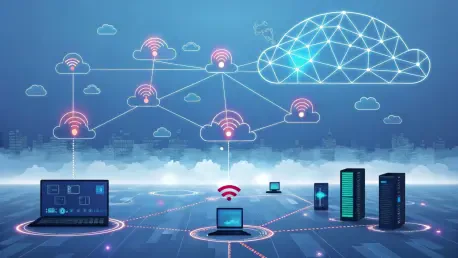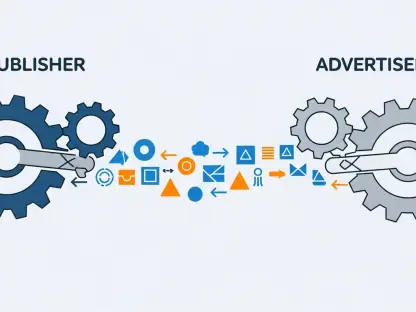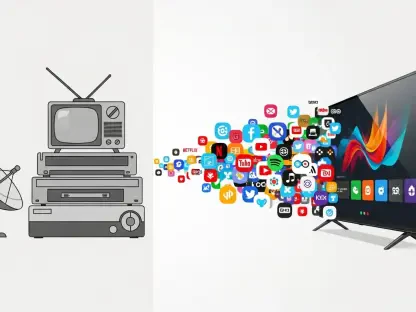The Internet of Things (IoT) is making substantial headway in reshaping public safety infrastructure worldwide, driven by technological advancements and innovative applications. Urban areas are investing heavily in IoT-powered solutions aimed at enhancing emergency services, surveillance networks, and disaster response systems. Market forecasts anticipate that the IoT in public safety market will experience a remarkable expansion, growing from USD 31.61 billion in 2023 to an estimated USD 130.19 billion by 2032. This rapid growth underscores a pivotal shift towards real-time connected technologies that strengthen public safety infrastructure globally.
Smart City Initiatives and Real-Time Technologies
Impact of IoT on Urban Centers
Cities across the globe are increasingly adopting smart technologies to create safer, more efficient environments for their inhabitants. These initiatives often feature the integration of IoT solutions into various aspects of municipal life, such as traffic systems, environmental sensors, and surveillance networks. These systems facilitate better crowd management and monitoring of environmental changes, enhancing overall quality of life. City administrations and national governments are taking a keen interest in deploying IoT technologies, as they contribute significantly to reduced crime rates and improved law enforcement efficiency. The effective use of IoT-powered real-time data analytics enables quicker decision-making, allowing authorities to respond promptly to public safety incidents and effectively manage resources.
Enhancements in City Management
IoT innovations permit cities to bolster operational efficiencies, advancing city management and public services. Smart traffic lights powered by IoT can autonomously adjust timings based on traffic data, reducing congestion and minimizing the risk of accidents. Public transportation systems equipped with IoT devices offer improved coordination and user experience by providing accurate, real-time information to commuters. Additionally, using smart sensors in city infrastructure can lead to water usage reduction and energy efficiency improvements, aiding cities in achieving sustainability objectives. Consequently, as populations grow and infrastructure ages, integrating IoT across urban areas will play a crucial role in maintaining modern cities’ functionality and adaptability.
Enhancements in Emergency and Disaster Response
Real-Time Incident Response
The IoT is revolutionizing emergency responses by equipping first responders with real-time data and situational awareness, substantially improving public safety outcomes. Faster incident assessment enables responders to allocate resources more efficiently and provide tailored solutions to complex situations. IoT-enabled devices deliver timely notifications to emergency personnel, alerting them to potential hazards or ongoing incidents. During natural disasters, connected devices and sensors diligently track environmental factors such as temperature, humidity, and seismic activity, enabling authorities to issue prompt warnings and facilitate swift evacuations.
Improved Coordination and Communication
Incorporating IoT into emergency response frameworks enhances communication among various agencies, which is vital for coordinated actions. For instance, IoT devices equipped with GPS and other tracking technologies provide real-time location information, helping responders navigate challenging terrains and quickly reach affected areas. Moreover, these technologies enable the transfer of visual information, such as images or live video feeds, to command centers for on-the-fly decision-making. This improved coordination contributes significantly to reducing response times and minimizing potential damages, ultimately saving lives during critical situations such as fires, earthquakes, and floods.
Security and Surveillance Advances
Addressing Escalating Security Threats
In the face of growing global security challenges, IoT-driven surveillance and communication systems are gaining momentum. Terrorism, civil unrest, and criminal activities necessitate the deployment of advanced safety technologies. Leveraging artificial intelligence (AI) and predictive analytics, these systems help law enforcement agencies forecast potential threats, recognize anomalies, and optimize resource distribution. Integrating AI with public safety networks enhances authorities’ ability to identify suspicious behavior, foster early interventions, and improve response times.
Emerging Surveillance Technologies
The evolution of surveillance technologies toward AI-enhanced solutions marks a new era of public safety. IoT-enabled CCTV cameras improve real-time communication with authorities and enhance threat detection mechanisms. Advanced facial recognition and image processing technologies deployed in smart cameras allow for seamless threat identification and location tracking. Additionally, new wearable IoT devices, such as smart helmets and biometric vests, enable monitoring of first responders’ health and location, delivering valuable insights for their protection and efficiency. These technological breakthroughs are manifesting a new paradigm in security and surveillance efforts worldwide.
Regional Dynamics and Insights
Progress in North America
North America stands at the forefront of the IoT in the public safety market, largely due to its early adoption of smart city technologies and strong governmental support for public safety enhancements. The region’s commitment to developing intelligent infrastructure has facilitated notable advancements in real-time data-driven public safety approaches. Active collaborations among US municipalities, technology providers, and research institutions have paved the way for successful safety project implementations that reflect best practices globally.
Growth in Europe and Asia-Pacific
Europe is experiencing rapid growth in the adoption of IoT within its public safety infrastructure, driven by EU-backed smart urban framework initiatives and cross-border security collaborations. Major European cities are capitalizing on this momentum, embracing IoT innovations to improve municipal safety and community well-being. The Asia-Pacific region is also witnessing significant expansion, motivated by massive urbanization efforts and technology adoption in China, India, and Japan. State-of-the-art investments in public infrastructure spark advancements in smart safety systems, enhancing resilience and ensuring citizens’ protection across diverse environments.
Key Market Participants
Role of Leading Technology Firms
Major technology companies are playing a critical role in advancing the IoT in the public safety market. Industry leaders, such as Cisco Systems, IBM Corporation, and Hitachi Vantara, are actively developing innovative safety solutions tailored to the needs of evolving public safety requirements. These firms are investing heavily in integrating AI, edge computing, and cloud technologies within IoT safety systems to deliver seamless, real-time response capabilities. By leveraging their expertise and resources, these companies ensure the reliable development of interconnected networks that enable timely information sharing to support public safety initiatives globally.
Collaborative Innovation Efforts
Collaboration among technology firms, security providers, and public safety agencies is essential for fostering innovation and addressing complex safety issues. Companies like Nokia Networks, Motorola Solutions, and Huawei Technologies are partnering with law enforcement agencies to develop integrated IoT safety solutions. These partnerships facilitate the exchange of knowledge and resources, encouraging continuous improvement across safety networks. As IoT adoption continues to grow in the public safety sphere, such collaboration will play a pivotal role in shaping the market’s future trajectory and ensuring its success.
Market Challenges
Addressing Data Privacy and Compliance
Despite significant advancements, the widespread implementation of IoT in public safety poses challenges. One major concern is data privacy and compliance, particularly in regions with stringent regulations like the GDPR. IoT devices collect, process, and store sensitive information, requiring robust protocols to protect users’ personal data from unauthorized access. Ensuring transparency and maintaining public trust are essential for the widespread acceptance and success of IoT safety systems across geographic locations. By incorporating comprehensive privacy mechanisms, companies can mitigate potential risks associated with data misuse and breaches.
Infrastructure Costs and Interoperability
The deployment of comprehensive city-wide IoT safety systems demands substantial investments in hardware, software, and skilled personnel. Infrastructure costs can be a significant barrier for government agencies, particularly in regions with limited budgets or competing priorities. Additionally, interoperability concerns arise from fragmented networks and disparate technologies, which challenge seamless data sharing among various safety agencies. Addressing these challenges by standardizing protocols and fostering interoperability agreements between providers and municipalities is vital for effective collaboration and optimized resource allocation.
Future Outlook
Emerging Trends and Technologies
The IoT in public safety market is set to evolve dramatically, with advancements paving the way for smarter, faster, and more proactive responses to safety threats. Edge AI will become increasingly vital for rapid decision-making, enabling real-time data analytics at the source. Furthermore, blockchain technology will enhance secure data sharing between agencies, reducing potential vulnerabilities and improving trust. The integration of next-generation emergency call systems with IoT technologies will provide enhanced context for responders during crises.
IoT’s Role in Healthcare Emergencies
As IoT technologies mature, their role in addressing healthcare emergencies is expected to grow. Connected medical devices will offer real-time patient data support, empowering healthcare providers to make informed decisions and deliver timely treatment. This advancement will be instrumental in navigating pandemics and other public health challenges, showcasing IoT’s versatility and potential for revolutionizing sectors beyond traditional public safety. Enhanced collaboration standards may emerge, fostering shared protocols for interoperable IoT deployments, ultimately strengthening global safety networks.
Looking Ahead
The Internet of Things (IoT) is significantly transforming public safety infrastructure worldwide, driven by rapid technological progress and innovative applications. Metropolitan areas are allocating substantial resources to IoT-driven solutions designed to boost emergency services, enhance surveillance networks, and improve disaster response systems. These advancements facilitate the integration of real-time data to help authorities make informed decisions more efficiently, thus reinforcing public safety measures. Experts predict that the market for IoT in public safety will witness substantial growth, increasing from USD 31.61 billion in 2023 to a projected USD 130.19 billion by 2032. Such expansion highlights a crucial shift towards connected technologies that bolster public safety infrastructures on a global scale. This trend reflects a growing commitment among cities worldwide to adopt cutting-edge technologies that ensure safer environments for their citizens by enabling quicker responses to emergencies and potential threats, thereby transforming traditional public safety approaches.









